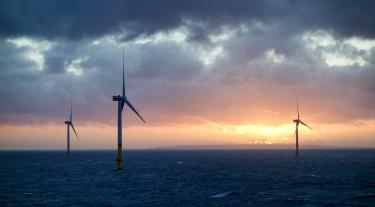The Offshore Renewables Joint Industry Programme (ORJIP) for Offshore Wind is a collaborative initiative that aims to:
- Convene stakeholders to conduct research into the impact of offshore wind on the marine environment over the whole project life cycle.
- Reduce environmental risk and cost for offshore wind developments.
The programme pools resources from the private sector and public sector bodies to fund projects that provide empirical data to support consenting authorities in evaluating the environmental risk of offshore wind. Projects are prioritised and informed by the ORJIP Advisory Network that includes key stakeholders such as statutory nature conservation bodies, academics, non-governmental organisations and others.
Stage 1
Stage 1 of the programme ran from 2012 to 2018 and was managed by the Carbon Trust and funded by The Crown Estate, Marine Scotland and Crown Estate Scotland, with additional developer funding for individual projects. Major studies included an investigation into the efficacy of acoustic deterrent devices on different marine mammals and a pioneering, two-year study to record and quantify the avoidance behaviour of seabirds around offshore wind farms.
Stage 2
Stage 2 was launched in 2019 and ran until 2025. In total, 14 projects have been funded across three phases in ORJIP Stage 2, each with a project expert panel (PEP) of key industry stakeholders to support project scoping and delivery.
Major studies include the development of a simulation model to assess seabird survival during the non-breeding season, improvements to underwater noise impact assessments, and enhancements to seabird sensitivity mapping tools
Contact us
To find out more contact ORJIP@carbontrust.com


